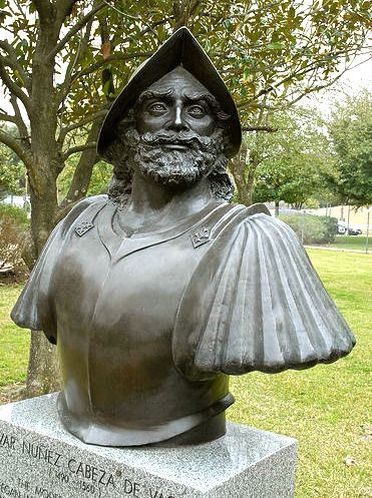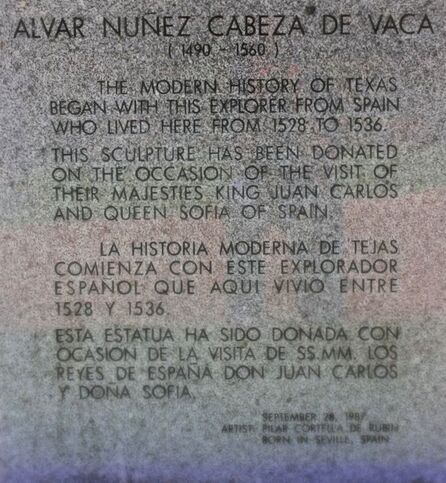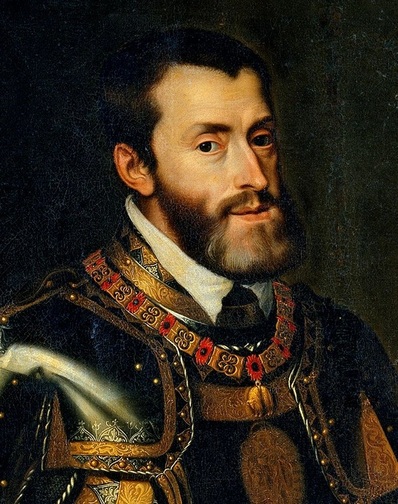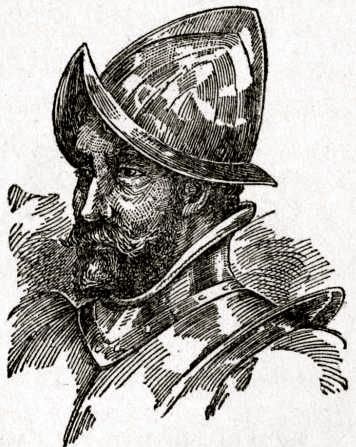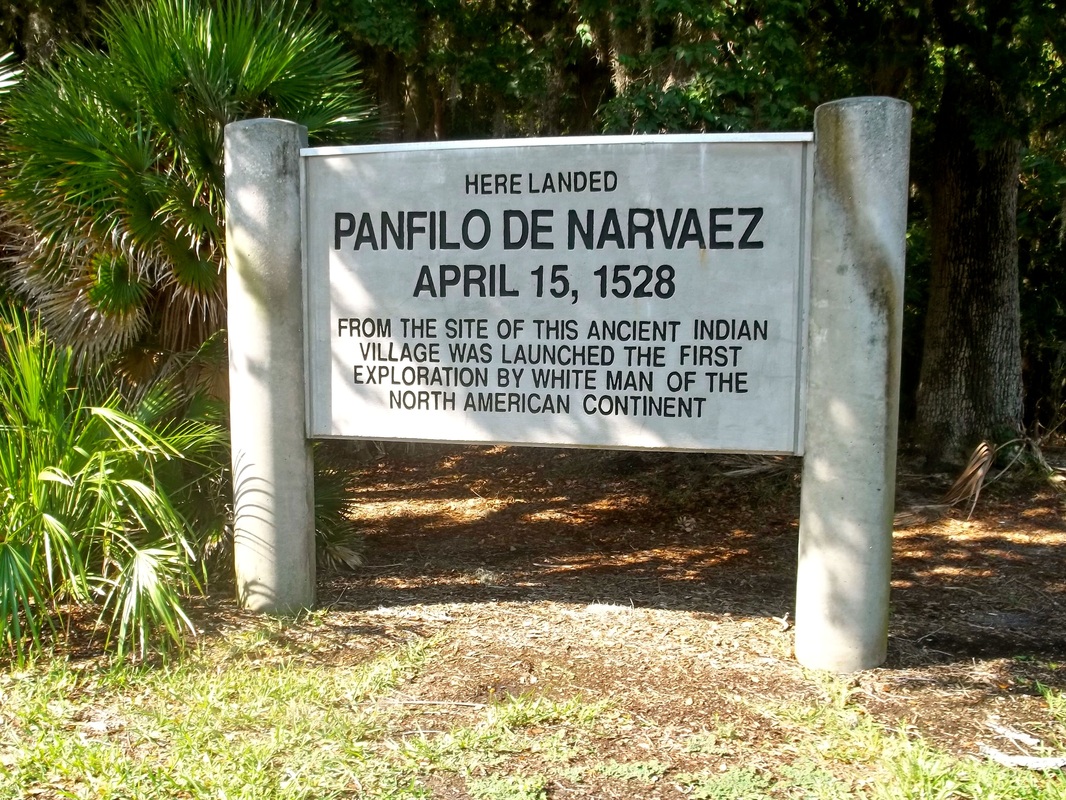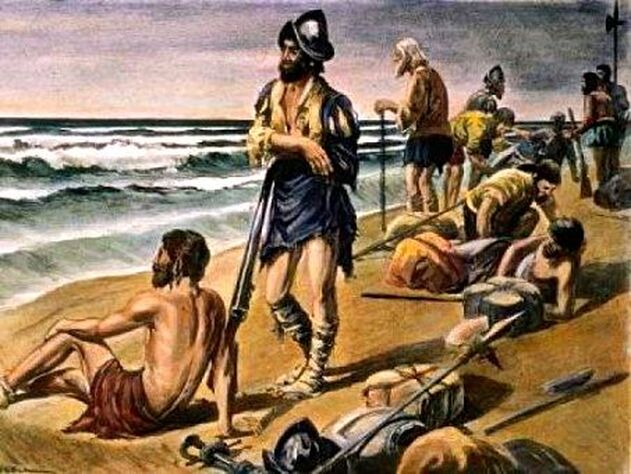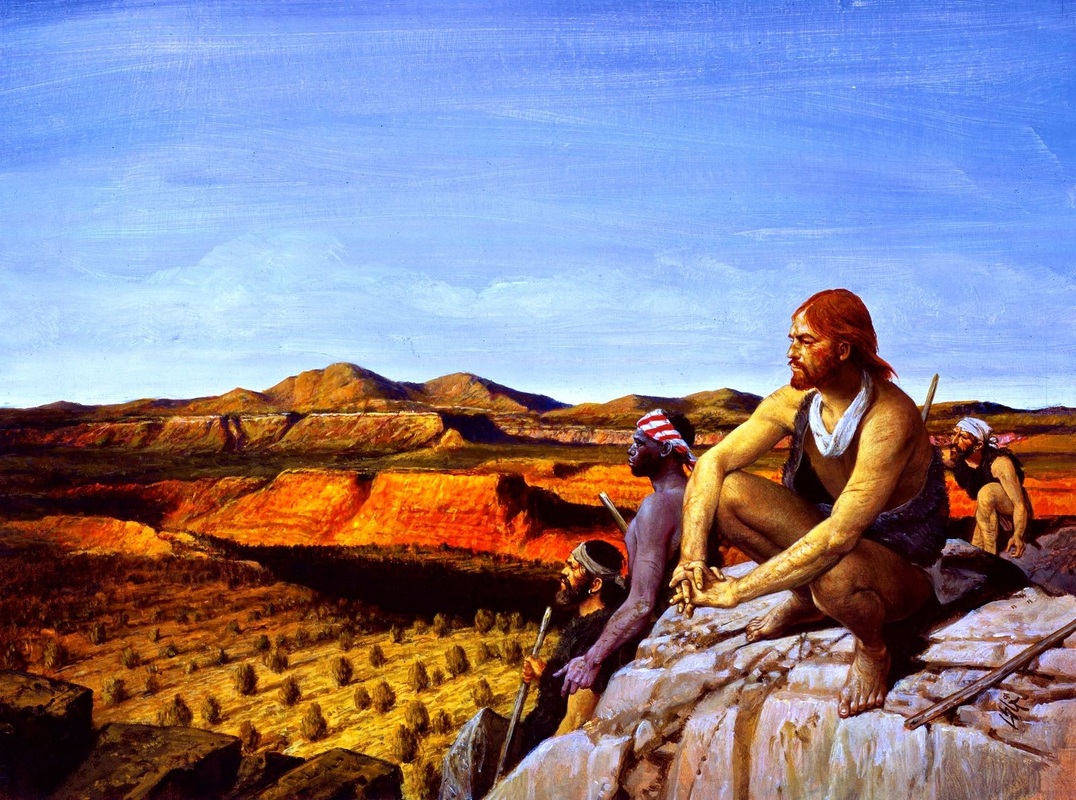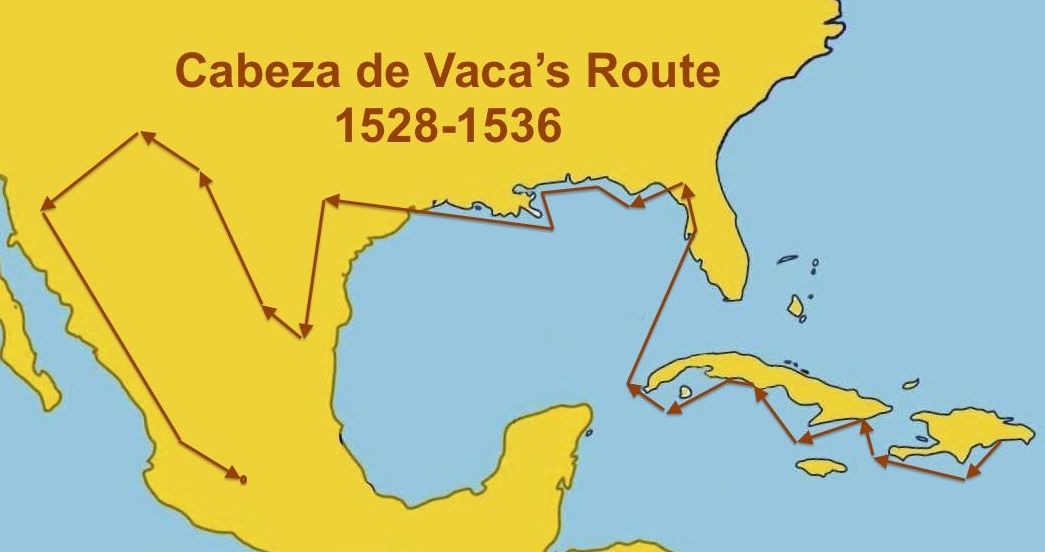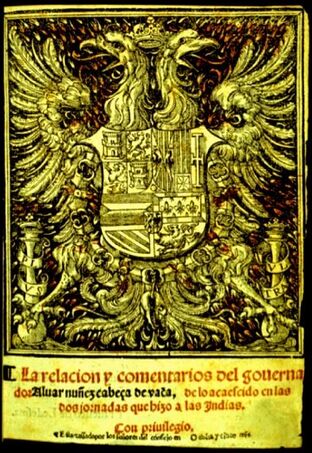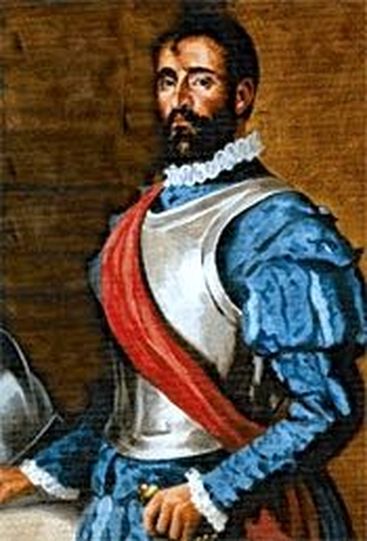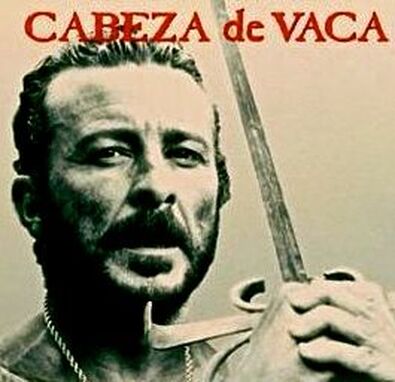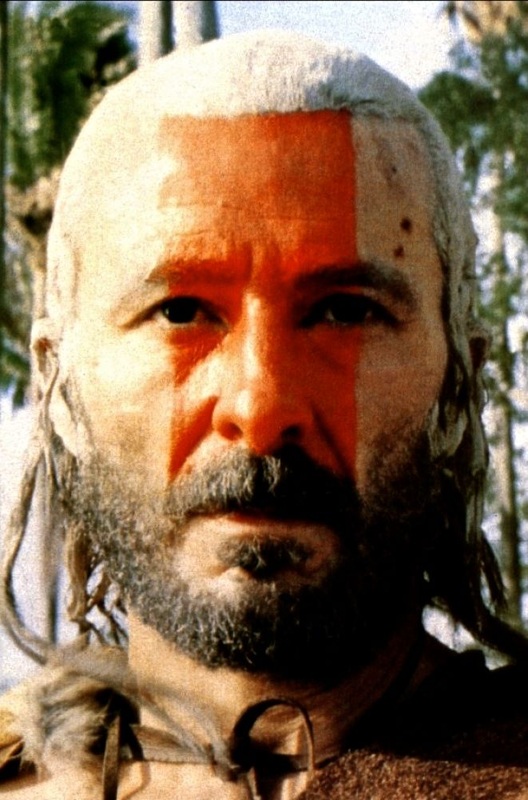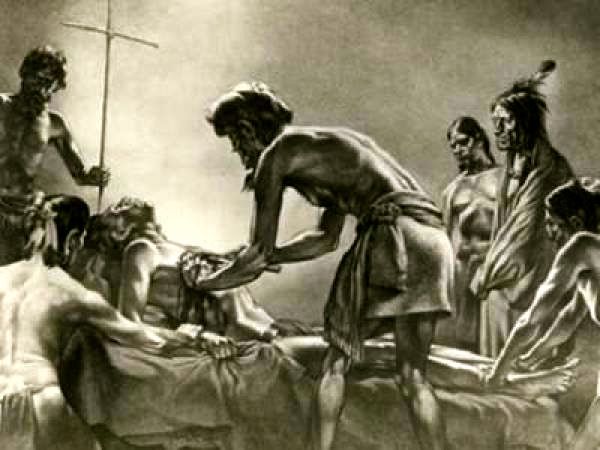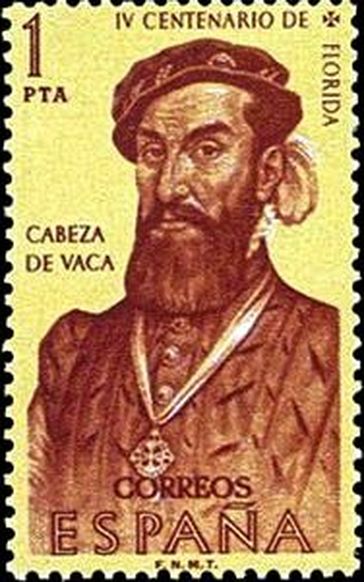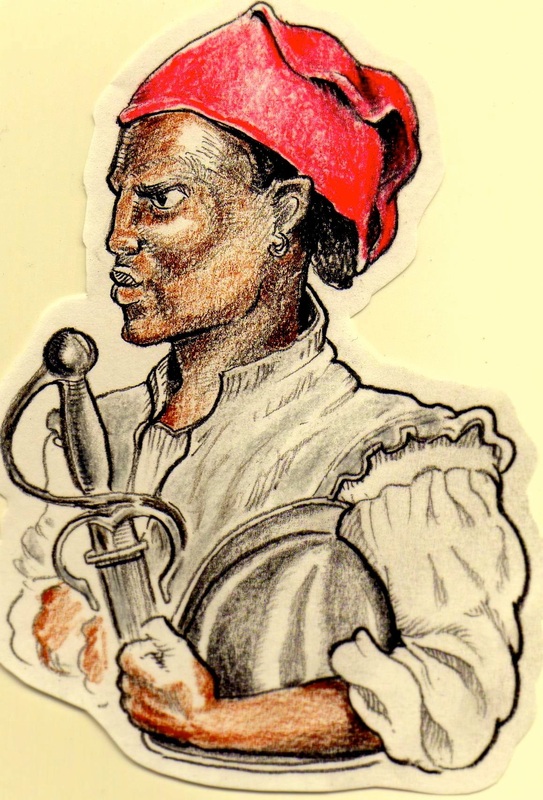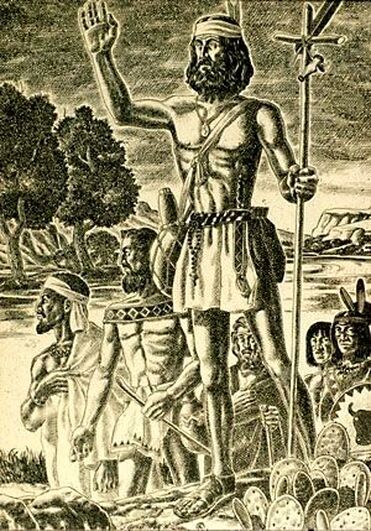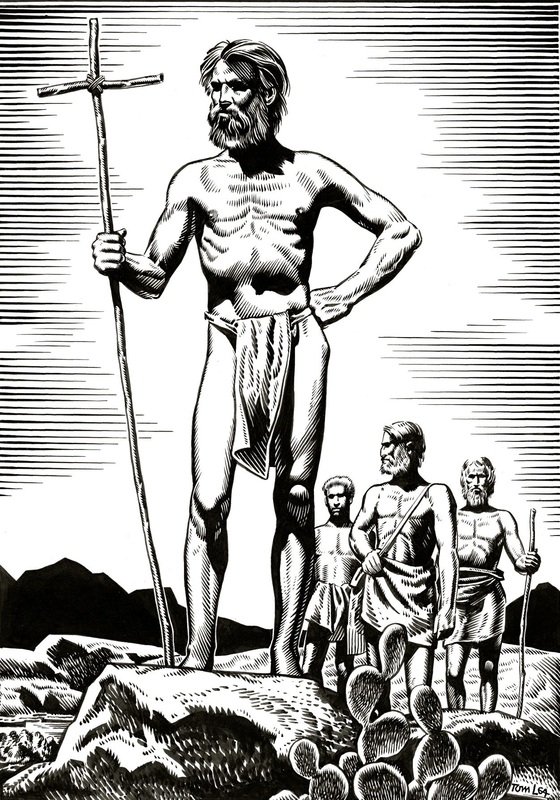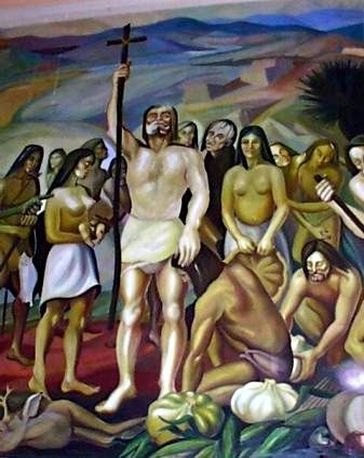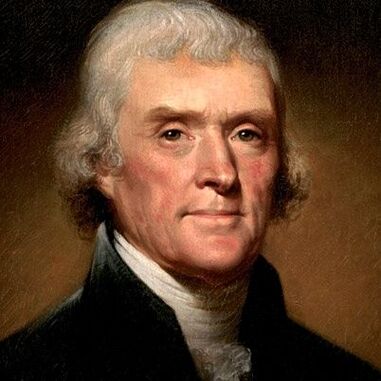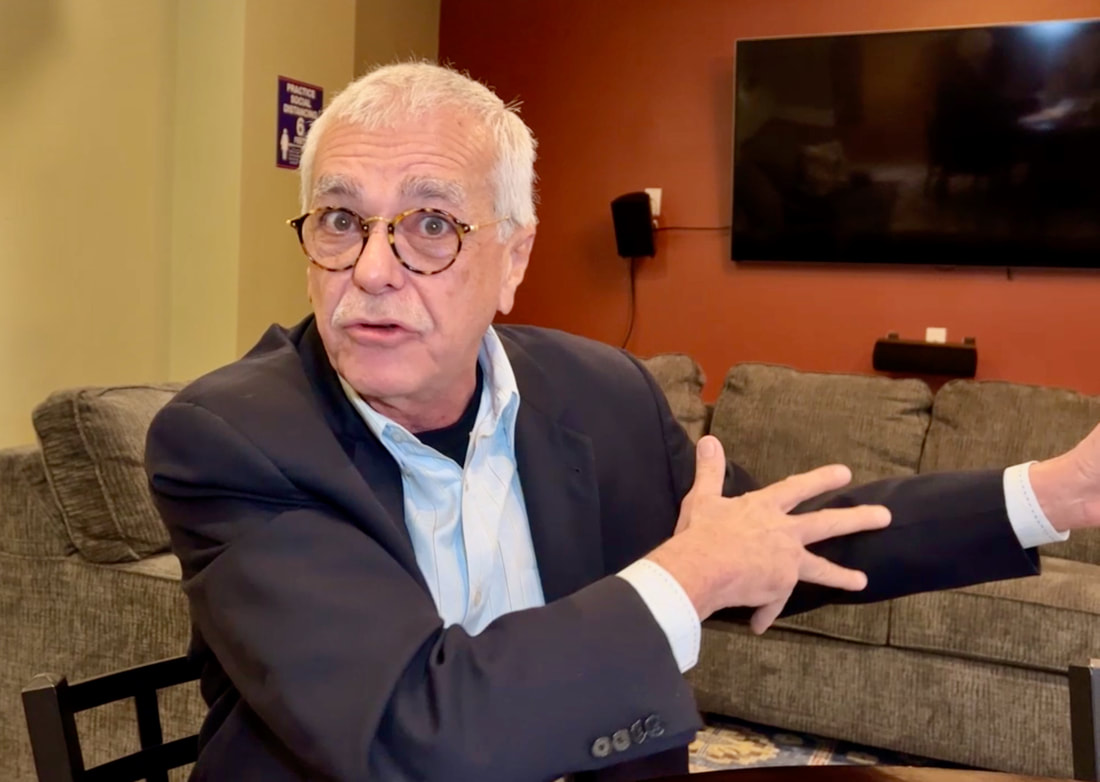44. Cabeza de Vaca's Journey
Gay Marriage's American History Started in Spanish
|
By Miguel Pérez
January 28, 2014 - The word, as originally written in Spanish, was "diablura," which has been translated to English in at least two ways: "wicked" or "devilish." But it was the way Alvar Núñez Cabeza de Vaca described an issue that is very contentious in society today: same-sex marriage. Perhaps he was being a bit judgmental. But what he said is not as important as when he said it. His observations were made almost 500 years ago. Cabeza de Vaca was a Spanish conquistador, and he was describing gay marriages among Native Americans. "During the time I spent with these people I saw one devilish thing, and that was a man married to another man," Cabeza de Vaca wrote in his 1542 book, "La Relación" ("The Account"). "These are impotent, effeminate men and they go about covered like women and they perform the tasks of women, and they shoot with a bow, and they carry very great loads." Long before the British colonists arrived, Cabeza de Vaca trekked across North America — from present-day Florida to Arizona — and same-sex marriage was just one of the many fascinating images he gave to a 16th-century Europe hungry for knowledge about the lives of the natives of the New World. Nowadays, if you search the Internet for the history of gay marriage in North America, you are likely to find someone quoting Cabeza de Vaca. Yet most Americans know very little of his amazing feats — if they know of him at all. Some people know him only as the shipwrecked conquistador who ended up living with the natives, first as their slave and later as their witch doctor, but not much more. He is part of America's hidden Hispanic heritage. Some background: Cabeza de Vaca was one of the officers — the treasurer — on the 1527-1528 Panfilo de Narváez expediton sent to the New World by King Charles I of Spain to establish a permanent settlement in Florida. After stops in Hispaniola and Cuba, and landing near Tampa Bay in April of 1528, Narváez led some 300 men on an overland expedition that was nearly extinguished by tropical storms, diseases and attacks from the natives of Florida. Having lost contact with their own ships, the 252 marooned and starving survivors ate their horses, built five boats and sailed west along the Gulf Coast, where many more, including Narváez, drowned in storms along the way. By September 1528, when they were swept onto and stranded on the place they named "The Island of Misfortune" (Galveston Island, Texas), only a few dozen survivors remained. And by the time they got off this island and trekked on foot for several years across Texas, New Mexico and Arizona, only Cabeza de Vaca and three others had survived.
Among the four survivors who managed to hook up with Spanish forces in present-day Mexico was Estevanico, an enslaved black man, born in Morocco, believed to be one of the first Africans to step ashore on what is now the continental United States. The story of these four survivors, the first Old World explorers to cross the North American wilderness, is relatively unknown to most Americans, who tend to be more familiar with the expedition of Lewis and Clark, which happened some 276 years later. Their attempts to coexist with the many native groups they encountered in the American Southwest created the captive narrative adventures that made Cabeza de Vaca's book a hit in Europe a few years later. Many of his shipmates were killed or enslaved by the natives of the Texas Gulf Coast; he survived by becoming a medicine man and trader, moving from tribe to tribe. A deeply religious man who believed he had the power of healing, Cabeza de Vaca isn't known by most people for becoming America's first evangelical preacher. Long before the Pilgrims and the Puritans brought religion to New England, Cabeza de Vaca had prayed and preached throughout the Southwest.
Most Americans don't know that although he was among the very first of the conquistadors to make contact with Native Americans, he also was one of the most conscientious and respectful of human rights. He was the first European-American historian. The first American history book — covering the time he spent living among various groups of Native Americans between 1528 and 1536 — was Cabeza de Vaca's "La Relación" ("The Account"). It was written in Spanish and published in Spain in 1542. It was republished later as "Naufragios" ("Shipwrecks"). Some American historians would tell you that "History of Plymouth Plantation," written from 1630 to 1651 by William Bradford, is the first American history book. Some even call Bradford, who arrived in America on the Mayflower in 1620, "The Father of American History." But they are the ones who begin counting American history in the 17th century and see it only from a British perspective. Cabeza de Vaca's account of almost eight years traveling across North America, originally written as a report to the king of Spain, preceded Bradford's 21-year depiction of Plymouth by 109 years! In fact, other American history books were written in Spanish long before the Mayflower dropped an anchor off Plymouth Rock, including Pedro de Castañeda's "Relación de la Jornada de Cibola," an eyewitness account of the Francisco Vázquez de Coronado expedition from New Spain (Mexico) through the territory that now covers Arizona, New Mexico, Texas, Oklahoma and Kansas from 1540 to 1542, and Garcilaso de la Vega's "La Florida del Inca o Historia de Adelantado Hernando de Soto" ("The Florida of the Inca or the History of Commander Hernando de Soto"), which was based on firsthand accounts by members of the 1539-1543 de Soto expedition through today's Florida, Georgia, South Carolina, North Carolina, Tennessee, Alabama, Mississippi, Arkansas, Louisiana and Texas. It may be mostly hidden from American history, but there is no way of denying that 16th-century North American literature was written by Spanish explorers who returned to Spain and published their journals. And while most Americans may not be aware of this today, some prominent Americans didn't forget it. "The ancient part of American history is written chiefly in Spanish," wrote Thomas Jefferson in 1787, as he tried to make another argument that would be contentious today: He believed that Americans should learn how to speak Spanish! "With respect to modern languages," Jefferson wrote, "French, as I have before observed, is indispensible. Next to this the Spanish is most important to an American. Our connection with Spain is already important, and will become daily more so." Those prophetic words are not among Jefferson's best-known quotations. Unfortunately, they are part of America's hidden Hispanic heritage — just like the descriptions of homosexuality written by Cabeza de Vaca and other Spanish explorers and missionaries during that "ancient part of American history" that was "written chiefly in Spanish" and mostly ignored by American historians. And although the Native American concepts of gender and sexuality were treated with contempt in that early Spanish-American literature, although homosexuality was seen as abhorrent based on the Spanish/Christian mores of the 16th century, evidence of its existence has been diminished by historians who choose to ignore the history of pre-British America. Nevertheless, Cabeza de Vaca's descriptions of how same-sex marriages functioned in North America almost 500 years ago are certainly noteworthy at a time when some segments of society still have difficulties accepting them. Similarly noteworthy are his many accounts of the first contacts between Europeans and Native Americans. His vivid descriptions of the peoples, and flora and fauna of pre-Columbian North America are truly fascinating. When he explains the division of labor between men and women in the America of the 1530s, Cabeza de Vaca notes that men did all the hunting, while the women literally carried the workload of nomad groups who were constantly relocating. And since gay men performed the tasks of women, they were considered a valuable asset when helping the women carry heavy loads. "And among these, we saw many of them, thus unmanly as I say, and they are more muscular than other men and taller," Cabeza de Vaca noted. "They suffer very large loads." Written almost like an adventure novel instead of the typically boring expeditionary literature, Cabeza de Vaca's book opened a new frontier for the imagination and greed of European explorers. He described North America as a special place where miracles happen and created unfounded speculation that other explorers could go back to North America and find mythical cities of gold. He triggered several other expeditions, which, although failing to find golden cities, brought de Soto, Coronado and many other Spanish explorers to what is now the United States. They created more pre-British American history and literature. We don't give him proper credit, but let's face it: It was Cabeza de Vaca's book that started the Hispanic migration to North America.
Frankly, perhaps more amazing than Cabeza de Vaca's finding of gay marriage among Native Americans is the fact that it has taken Europeans and their descendants almost five centuries to accept it. Who knows? Perhaps if we had paid more attention to what Jefferson called "the ancient part of American history," gay marriage would be ordinary now. And if more Americans recognized that our history was first written in Spanish, perhaps our Hispanic heritage would not be so hidden. COPYRIGHT 2014 CREATORS.COM |
In Spanish
|
Please share this article with your friends on social media:



